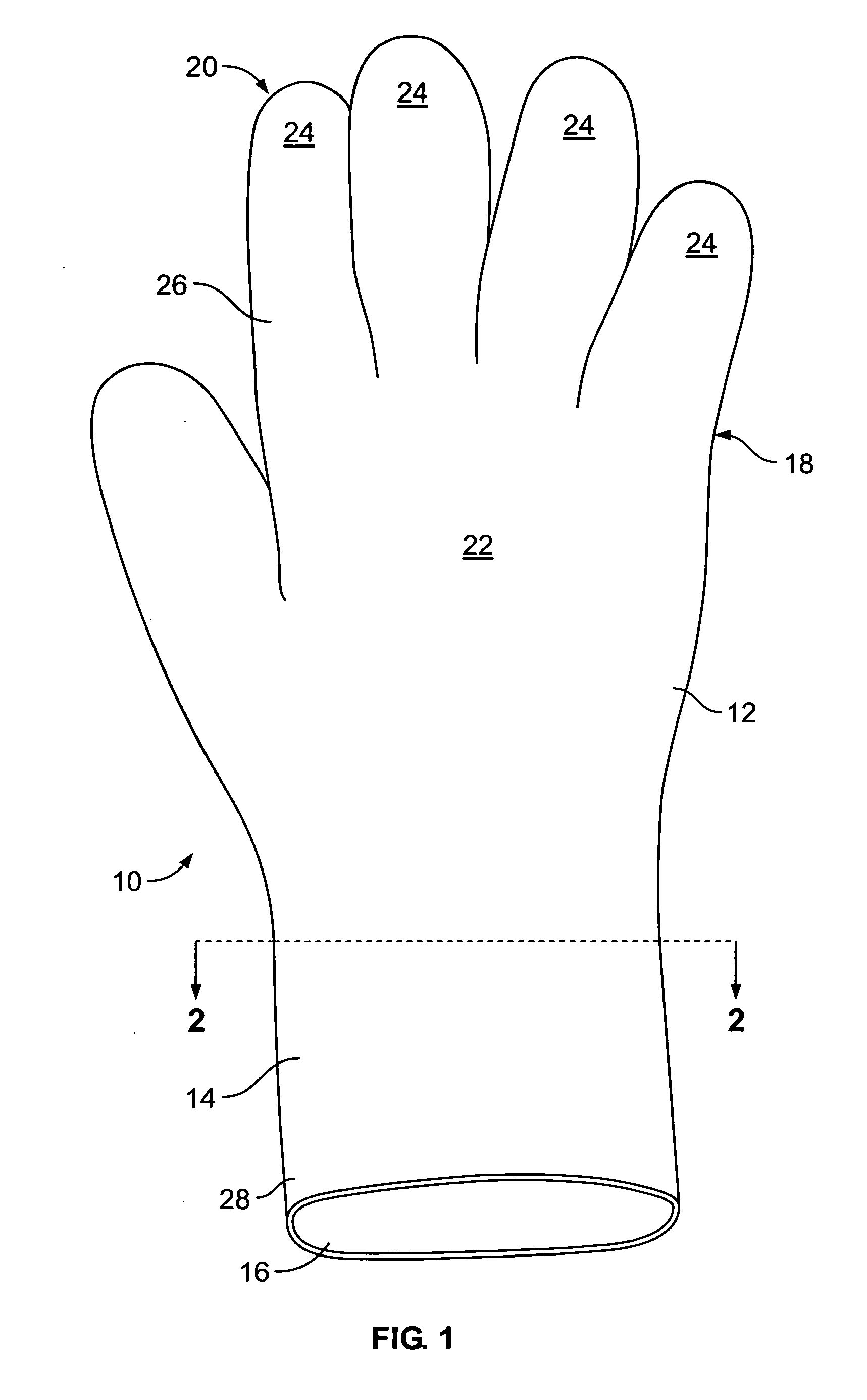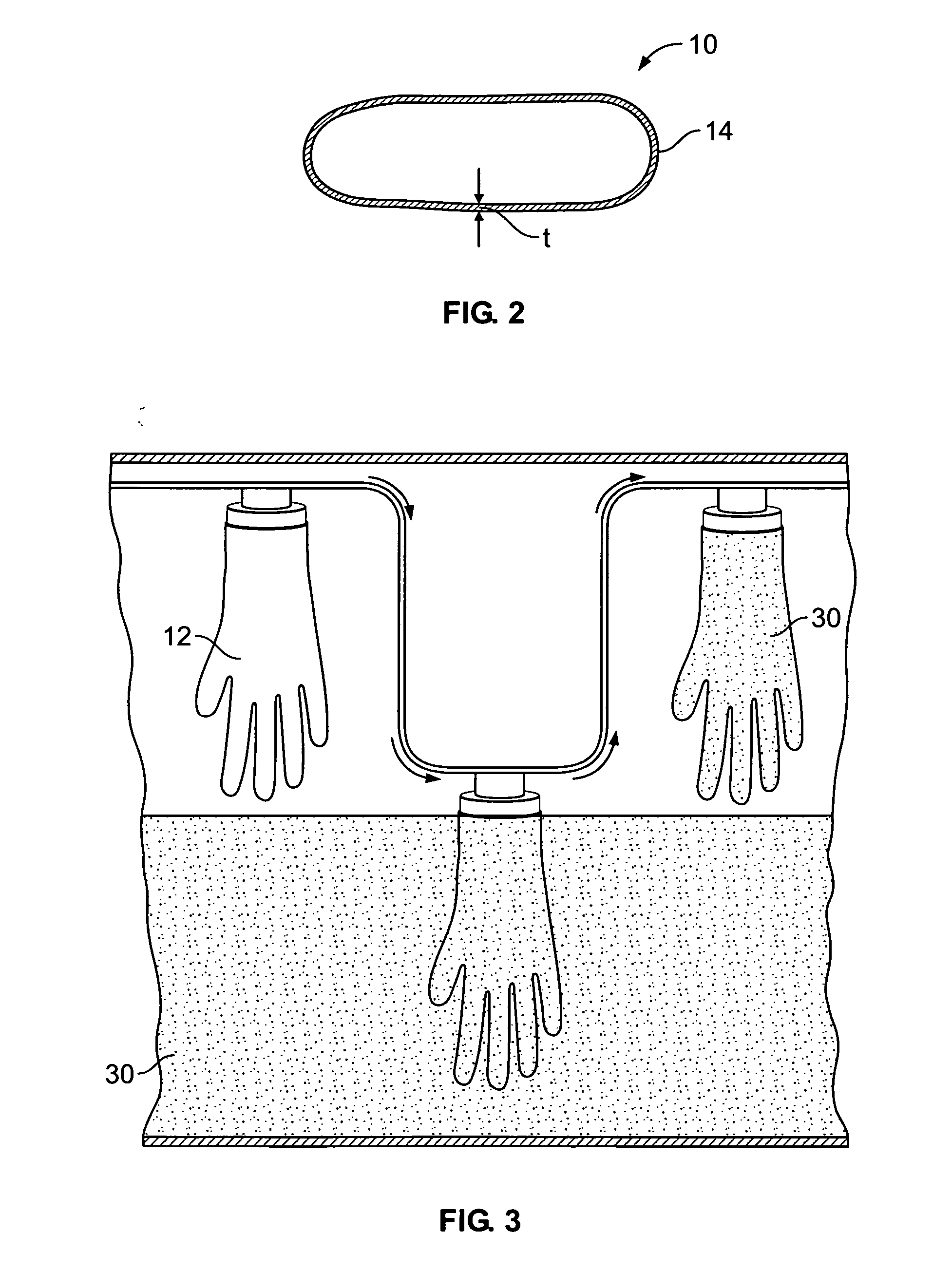Disposable gloves
a glove and glove technology, applied in the field of gloves, can solve the problems of increased occurrence of adverse symptoms, high risk of encountering such problems, and many life-threatening problems with the use of latex, and achieve the effect of increasing the thickness of the glov
- Summary
- Abstract
- Description
- Claims
- Application Information
AI Technical Summary
Benefits of technology
Problems solved by technology
Method used
Image
Examples
example 1
[0035] Laboratory testing of a glove comprising approximately 50% polyisoprene and approximately 50% neoprene was performed. The 50% polyisoprene, 50% neoprene glove was tested using an Instron® Universal Testing System (Burlington, Ontario), which measured the tensile strength (Ts), elongation (Eb) and modulus (M500) as determined by ASTM D 412-98a, ASTM D 624-00e1, and ASTM D 1894-00. The 50% polyisoprene, 50% neoprene glove was then aged in an oven maintained at a temperature of about 70° C. for approximately 168 hours to determine the effects of the aging on the glove.
[0036] Similar testing was performed on comparative gloves comprising approximately 100% polyisoprene and 100% latex. The properties of the 50% polyisoprene, 50% neoprene glove compared to those of the comparative 100% polyisoprene glove and the 100% latex glove are set forth in Table 2 below.
TABLE 2Aged 70° C.Unaged@ 168 hrsTsEbM500TsEbThickness (mm)Sample(MPa)(%)(MPa)(MPa)(%)CuffPalmFinger50% Polyisoprene / 17.8...
PUM
| Property | Measurement | Unit |
|---|---|---|
| viscosity | aaaaa | aaaaa |
| thickness | aaaaa | aaaaa |
| elastic | aaaaa | aaaaa |
Abstract
Description
Claims
Application Information
 Login to View More
Login to View More - R&D
- Intellectual Property
- Life Sciences
- Materials
- Tech Scout
- Unparalleled Data Quality
- Higher Quality Content
- 60% Fewer Hallucinations
Browse by: Latest US Patents, China's latest patents, Technical Efficacy Thesaurus, Application Domain, Technology Topic, Popular Technical Reports.
© 2025 PatSnap. All rights reserved.Legal|Privacy policy|Modern Slavery Act Transparency Statement|Sitemap|About US| Contact US: help@patsnap.com



